VoRtex Metaverse Platform for Gamified Collaborative Learning
Abstract
:1. Introduction
2. Related Work
3. VoRtex—Metaverse System Description
3.1. Architecture Outline
- VW system (VWs produced by content creators or in this case teachers)
- Digital avatars (selection and customization)
- Intelligent agents (virtual assistants and chatbots)
- Software as a service (SaaS) and Platform as a Service (PaaS) interface for cloud infrastructure
- Learning material (presentations or video tutorials)
- Virtual classrooms (created VLEs for students and teachers)
- Open space with a central area and clear boundaries in which users have the freedom to move and interact. A suitable environment where students can interact with objects and manipulate components.
- Lessons are uniquely designed based on the topic, with immersive and gamification features such as role-playing and teamwork collaboration.
- The lesson has a unique name and direct access to the VW learning environment.
- Each lesson should provide an interactive web page (SaaS component) where teachers have admin controls for manipulating lesson content.
- Allows users in an environment to communicate using the chat system or VoIP.
3.2. Web Platform
3.3. Access Control
- Facial recognition
- Fingerprints
- Speaker (voice) recognition
- SMS (messaging service)
- Email
3.4. Intelligent Agents and MicroLessons
- Build 3D interactive simulation (introduction to game development);
- Bank resource management and critical thinking (introduction to finance and decision making);
- Real-world physics (a lesson about laws of physics);
- Scientific method (chemistry and biology);
- Flora and fauna exploration (vegetation and animal); and
- Earth exploration and time travel (geography and history).
3.5. VLE User Interface
- Non-immersive systems (desktop PC);
- Extended reality (XR), defined as systems that simulate 3D objects in the virtual or real-world; or
- Immersive systems that create a VW in a designed physical space (CAVE).
3.6. Implemented Prototype Details
- Networking using LAN network (server and clients),
- Communication using the chat system,
- Freedom of movement inside a VW,
- Freedom of choice of digital avatar representatives in a VW,
- Privileges between user roles,
- Object manipulation over interactable objects in a VW, and
- View perspectives (first-person and third-person).
4. Evaluation of Metaverse Platforms
4.1. Technology Evaluation Method
- Implement an access system for user authorization and authentication (security);
- Enable tools for creating a virtual classroom without additional programming skills (VW design);
- Enable the deployment of the virtual classroom to end-users on cloud servers or local (institutions) machines (scalability);
- Enable virtual assistance during the session that support teachers for predefined courses (content generation); and
- Design immersive environment that can be used via different user interfaces (Communication using PC desktop or VR devices).
4.2. User Experience Evaluation
- Effective communication: present ideas in a confident, professional manner for future communications community;
- Competence in application and practice, properly utilize engineering techniques, as well as relevant tools and programs;
- Interpersonal and teamwork skills: the ability to function effectively as a team member or leader; and
- Problem-solving skills: how to identify and approach problems and define objectives.
- Collaborative work and training using 3D models (space traveling for astronauts, car manufacturing, industrial equipment, etc.);
- Demonstration and simulation (showing atom and molecules structure, flows of current, electromagnetic fields);
- Virtual surgery and dissection to teach medical students;
- Geography lessons and visiting destinations with our avatar;
- Problem-solving and interactive code review; and
- Conferences and meetups for sharing knowledge (multi-user sessions).
- The virtual world can impact how to learn geography more efficiently. It is not the same when we see a photo or video of someplace as visiting some destination with our avatar. It is much more interesting to learn geography in the virtual world. In virtual worlds, learning becomes easier and more interesting because we feel like we are in a video game. This is a major VWs advantage in comparison to the real-world classroom session.
- Teachers noticed the advantage of using a platform for demonstration exercises via a VW application in comparison to the real-world classroom session. Using the MicroLesson feature, they can build a gamified interactive experience for computer science lessons related to programming and 3D graphics. During real-world classroom sessions, this lesson does not have many practical methods except writing software code; adding an element of visual programing can simplify many problem-solving algorithms.
- Education and problem-solving aspects using 3D avatars could be a good way to personalize the experience and attract users to support the platform. However, monitoring students’ activities is difficult because the focus is on the virtual environment. The VoRtex platform utilizes multi-factor identity, teachers are reliable over biometric checks. Real-world classroom sessions are more reliable for student activities monitoring.
- Regarding the digital avatar inside the VoRtex demonstration, many participants commented that the avatar design was cartoonish. Many participants prefer a photorealistic VW environment and digital avatar models. Using an existing avatar can make VW experience frivolous for many users, so adding realistic 3D-scanned avatars using photogrammetry provides a more immersive experience for an older audience. This feature is integrated into future software iterations.
4.3. Future improvements
5. Conclusions
Author Contributions
Funding
Institutional Review Board Statement
Informed Consent Statement
Data Availability Statement
Conflicts of Interest
References
- Rosa, R.; Paula, E.; Nuno, E. Comparing Social Virtual Worlds for Educational Purposes. Education 2010, 1, 186–190. [Google Scholar]
- Jovanović, A.; Milosavljević, A. Review of Modern Virtual Reality HMD Devices and Development Tools. In Proceedings of the ICEST 2017 Conference of the 52nd International Scientific Conference on Information, Communication and Energy Systems and Technologies, Niš, Serbia, 28–30 June 2017. [Google Scholar]
- Krajčovič, M.; Gabajová, G.; Furmannová, B.; Vavrík, V.; Gašo, M.; Matys, M. A Case Study of Educational Games in Virtual Reality as a Teaching Method of Lean Management. Electronics 2021, 10, 838. [Google Scholar] [CrossRef]
- Maurício, S.; Veado, L.; Moreira, R.; Costa, H.; Figueiredo, E. A Systematic Mapping Study on Game-related Methods for Software Engineering Education. Inf. Softw. Technol. 2018, 95, 201–218. [Google Scholar]
- Vircadia. Available online: https://vircadia.com/ (accessed on 17 December 2021).
- Sansar. Available online: https://www.sansar.com/ (accessed on 17 December 2021).
- Mannien, T. Interaction in Networked Virtual Environments as Communicative Action—Social Theory and Multi-player Games. In Proceedings of the CRIWG2000 Workshop, Madeira, Portugal, 18–20 October 2000. [Google Scholar]
- Stichter, J.; Laffey, J.; Galyen, K.; Herzog, M. iSocial: Delivering the Social Competence Intervention for Adolescents (SCI-A) in a 3D Virtual Learning Environment for Youth with High Functioning Autism. J. Autism Dev. Disord. 2013, 2, 417–430. [Google Scholar] [CrossRef] [PubMed]
- Stendal, K.; Balandin, S. Virtual worlds for people with autism spectrum disorder: A case study in Second Life. Disabil. Rehabil. 2015, 37, 1–8. [Google Scholar] [CrossRef] [PubMed]
- Fernandez-Herrero, J.; Lorenzo, G. An immersive virtual reality educational intervention on people with autism spectrum disorders (ASD) for the development of communication skills and problem-solving. Educ. Inf. Technol. 2019, 25, 1689–1722. [Google Scholar] [CrossRef]
- Warburton, S. Second Life in higher education: Assessing the potential for and the barriers to deploying virtual worlds in learning and teaching. Br. J. Educ. Technol. 2009, 40, 414–426. [Google Scholar] [CrossRef]
- Sloodle Learning System for Virtual Environments. Available online: http://www.sloodle.org/ (accessed on 17 December 2021).
- Nunes, F.; Herpich, F.; Amaral, É.; Voss, G.; Zunguze, M.; Medina, R.; Tarouco, L. A dynamic approach for teaching algorithms: Integrating immersive environments and virtual learning environments. Comput. Appl. Eng. Educ. 2017, 25, 1–20. [Google Scholar] [CrossRef]
- Greenwald, S.W.; Corning, W.; Maes, P. Multi-User Framework for Collaboration and Co-Creation in Virtual Reality. In Proceedings of the 12th International Conference on Computer Supported Collaborative Learning (CSCL), Philadelphia, PA, USA, 18–22 June 2017. [Google Scholar]
- Passos, C.; Silva, M.H.; Abreu Mol, A.C.; Carvalho, P.V.R. Design of a collaborative virtual environment for training security agents in big events. Cogn. Technol. Work 2017, 19, 315–328. [Google Scholar] [CrossRef]
- Sharma, S.; Devreaux, P.; Scribner, D.; Grynovicki, J.; Grazaitis, P. Megacity: A Collaborative Virtual Reality Environment for Emergency Response, Training, and Decision Making. Electron. Imaging Vis. Data Anal. 2017, 1, 70–77. [Google Scholar] [CrossRef]
- Cruz-Benito, J.; Maderuelo, C.; García-Peñalvo, F.; Therón, R.; Pérez, B.; Jonás, S.; Zazo, H.; Martin, A. Usalpharma: A Software Architecture to Support Learning in Virtual Worlds. IEEE Rev. Iberoam. Tecnol. Aprendiz. 2016, 11, 194–204. [Google Scholar] [CrossRef] [Green Version]
- Zizza, C.; Starr, A.; Hudson, D.; Nuguri, S.; Calyam, P.; He, Z. Towards a Social Virtual Reality Learning Environment in High Fidelity. In Proceedings of the 15th IEEE Annual Consumer Communications & Networking Conference (CCNC), Las Vegas, NV, USA, 12–15 January 2018. [Google Scholar]
- High Fidelity GitHub. Available online: https://github.com/highfidelity/hifi (accessed on 17 December 2021).
- Mystakidis, S. Distance Education Gamification in Social Virtual Reality: A Case Study on Student Engagement. In Proceedings of the 11th International Conference on Information, Intelligence, Systems and Applications, Piraeus, Greece, 15–17 July 2020. [Google Scholar]
- Rodriguez Santiago, I.; Salamó, M.; Puig, A. Design and Evaluation of Gamification Experiences in Computer Science Studies. In Proceedings of the 6th International Conference on Higher Education Advances, Xiamen, China, 27–29 November 2020. [Google Scholar]
- Gadille, M.; Impedovo, M.; Rémon, J.; Corvasce, C. Interdependent creativity for learning in a virtual world. Inf. Learn. Sci. 2021, 122, 610–628. [Google Scholar] [CrossRef]
- Zhang, Z.; Zhang, M.; Chang, Y.; Aziz, E.S.; Esche, S.K.; Chassapis, C. Collaborative virtual laboratory environments with hardware in the loop. Cyber-Phys. Lab. Eng. Sci. Educ. 2018, 363–402. [Google Scholar] [CrossRef]
- Tivoli VR. Available online: https://tivolicloud.com/ (accessed on 17 December 2021).
- Marlatt, R. Capitalizing on the Craze of Fortnite: Toward a Conceptual Framework for Understanding How Gamers Construct Communities of Practice. J. Educ. 2019, 200, 3–11. [Google Scholar] [CrossRef]
- Feng, A.; Rosenberg, E.; Shapiro, A. Just-in-time, viable, 3-D avatars from scans. Comput. Animat. Virtual Worlds 2017, 28, 1–2. [Google Scholar] [CrossRef]
- Lapin, K. A Comparison of Three Virtual World Platforms for the Purposes of Learning Support in VirtualLife. Soc -Inform. Telecommun. Eng. 2009, 40, 273–279. [Google Scholar]
- Escudeiro, P. X-Tec Model and QEF Model: A case study. Proceedings of World Conference on E-Learning in Corporate, Government, Healthcare, and Higher Education, Quebec City, QC, Canada, 15 October 2007. [Google Scholar]
- Jovanović, A.; Milosavljević, A. VoRtex Enterprise: Decentralized Virtual Reality Blockchain-based Platform. Facta Univ. Ser. Autom. Control Robot. 2019, 18, 57–77. [Google Scholar] [CrossRef]
- Spence, J. Demographics of Virtual Worlds. J. Virtual Worlds Res. 2008, 1, 1941–8477. [Google Scholar] [CrossRef]
- ISTE Standard for Students. Available online: https://www.iste.org/standards/iste-standards-for-students (accessed on 17 December 2021).
- MetaHuman Creator and Unreal Engine. Available online: https://www.unrealengine.com/en-US/digital-humans (accessed on 17 December 2021).
- Chong, H.T.; Lim, C.K.; Ahmed, M.F.; Tan, K.L.; Mokhtar, M.B. Virtual Reality Usability and Accessibility for Cultural Heritage Practices: Challenges Mapping and Recommendations. Electronics 2021, 10, 1430. [Google Scholar] [CrossRef]
- Rogers, S.L.; Broadbent, R.; Brown, J.; Fraser, A.; Speelman, C.P. Realistic Motion Avatars are the Future for Social Interaction in Virtual Reality. Front. Virtual Real. 2022, 2, 163. [Google Scholar] [CrossRef]
- Vortex Video Showcase Presentation. Available online: https://www.youtube.com/channel/UC_JffLKo1rZQWKra5Arh6ag (accessed on 17 December 2021).
- VoRtex Source Code. Available online: https://github.com/Aca1990/VoRtex-School (accessed on 17 December 2021).
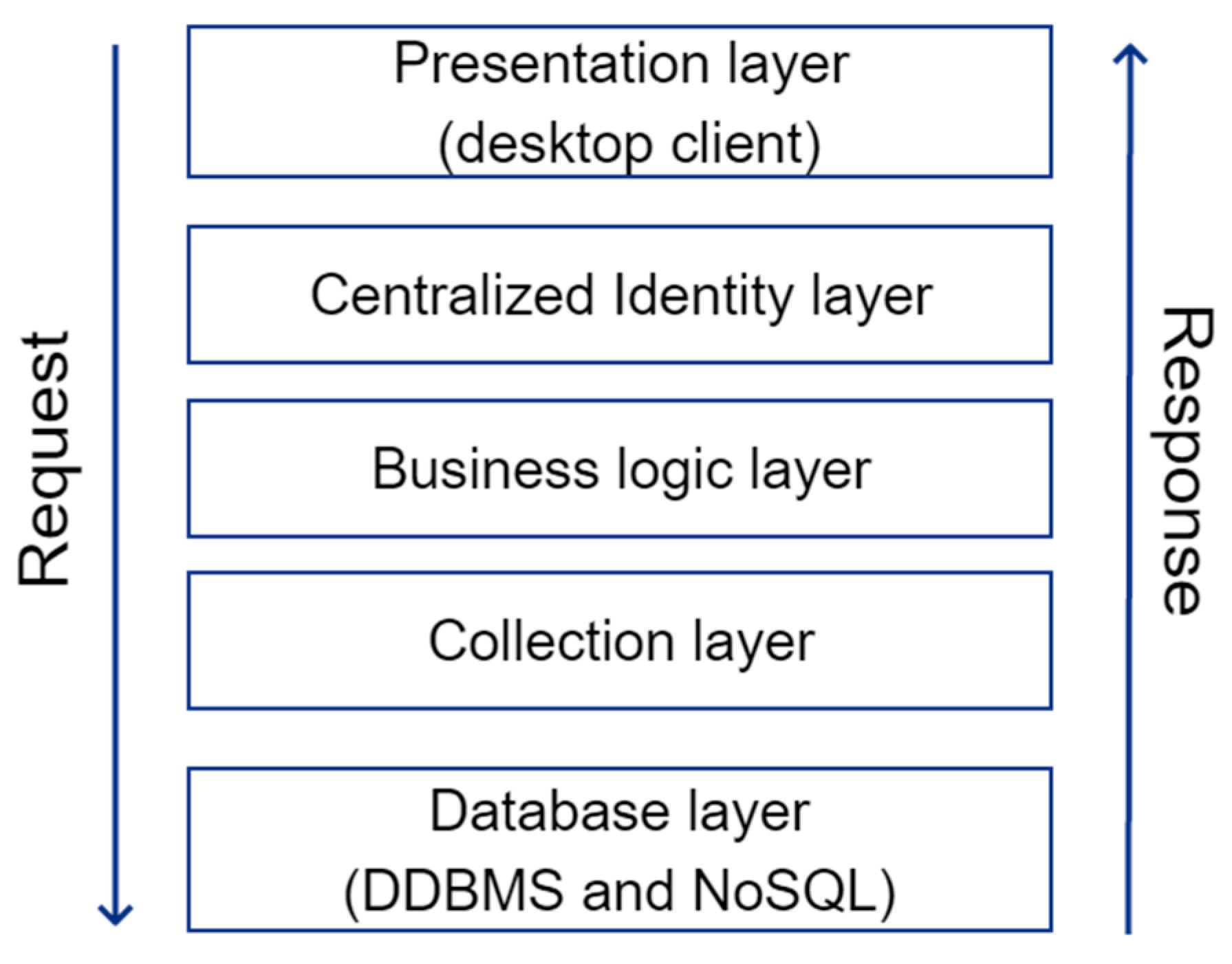
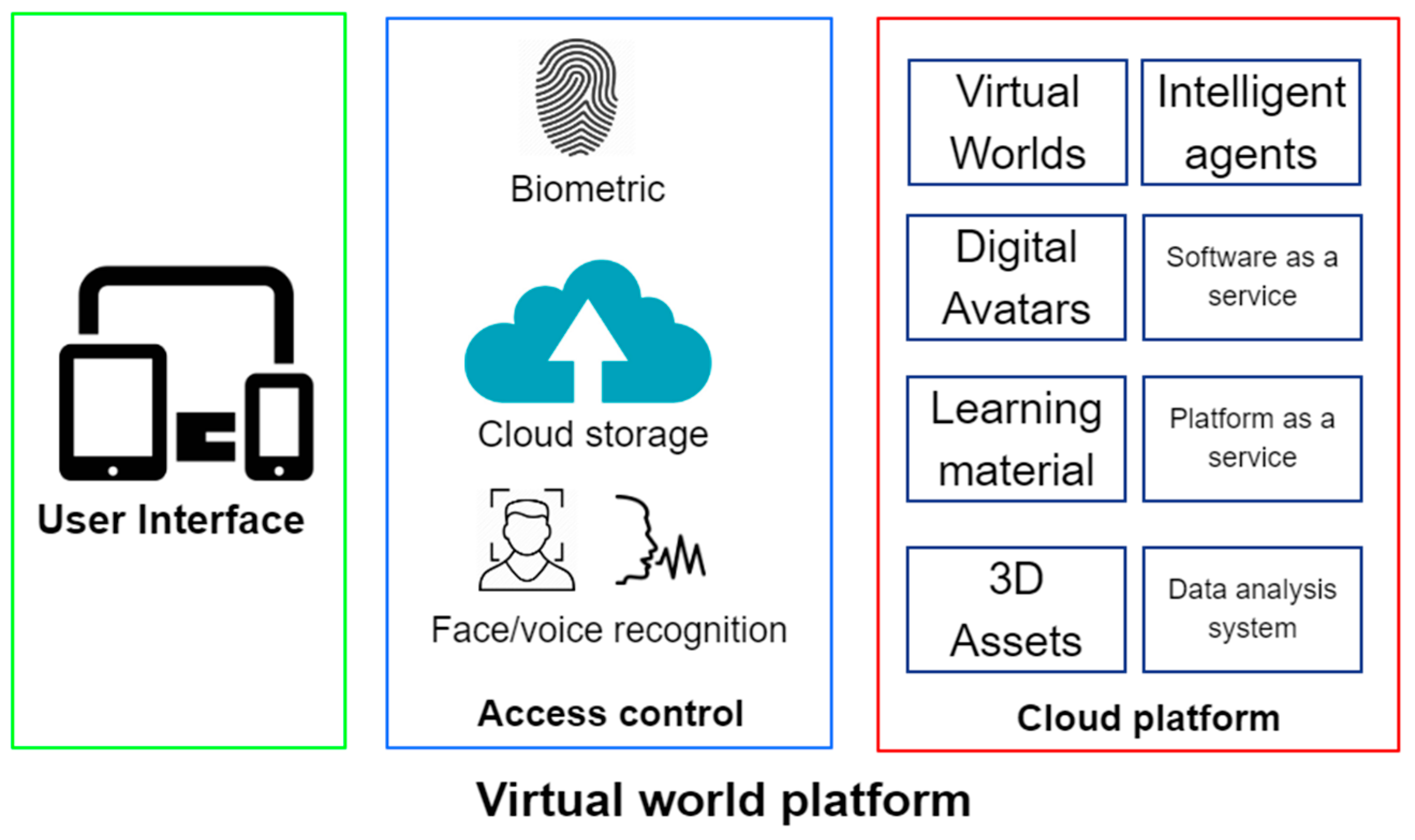
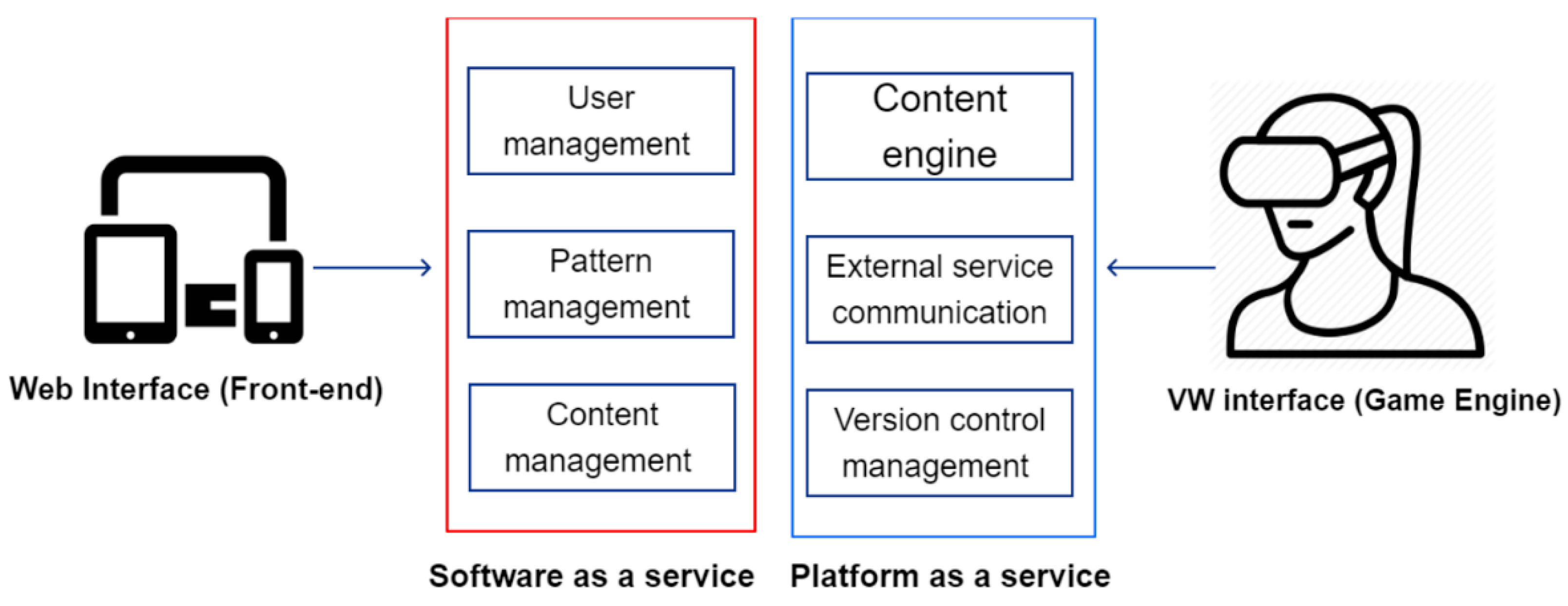
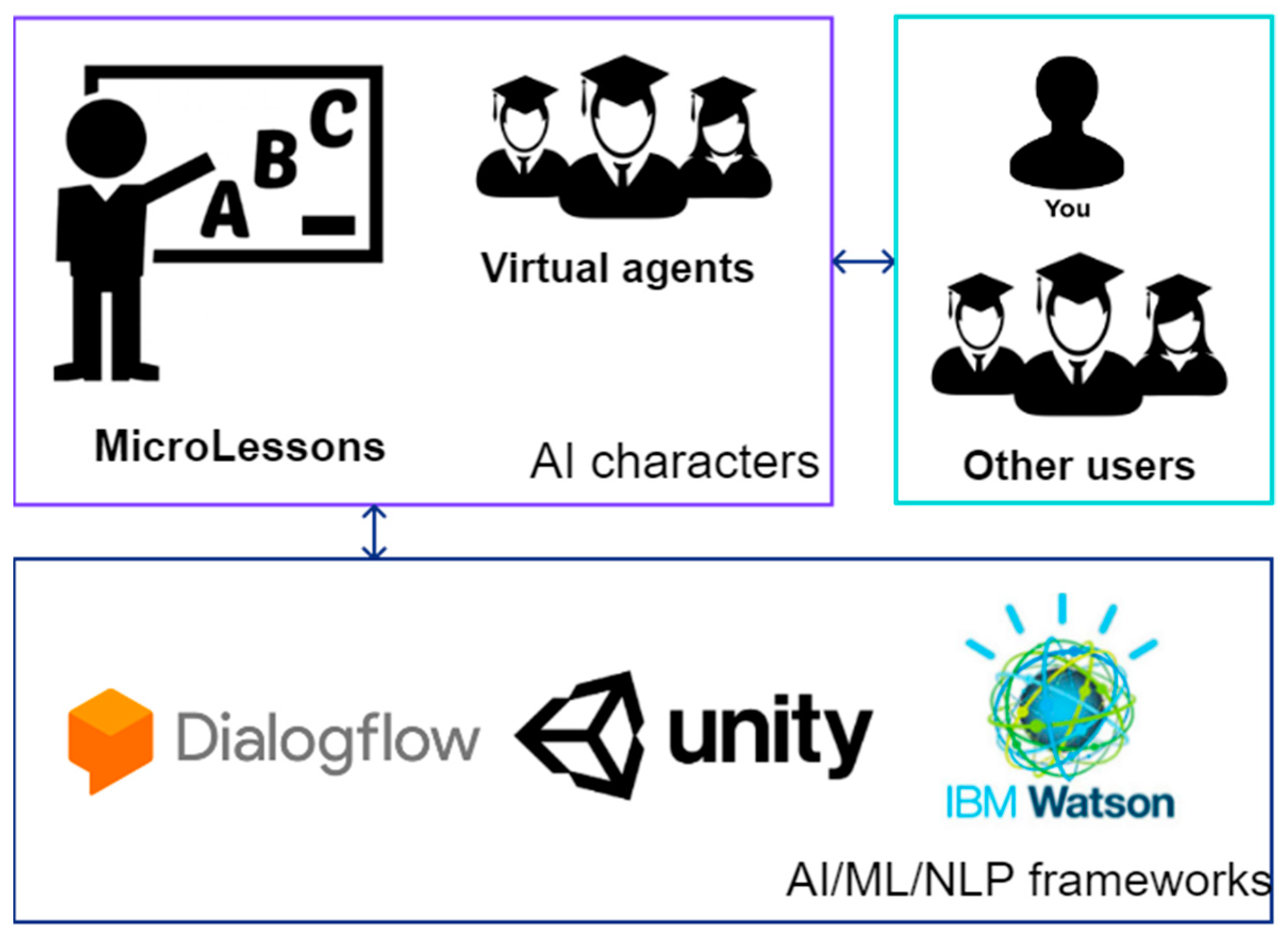
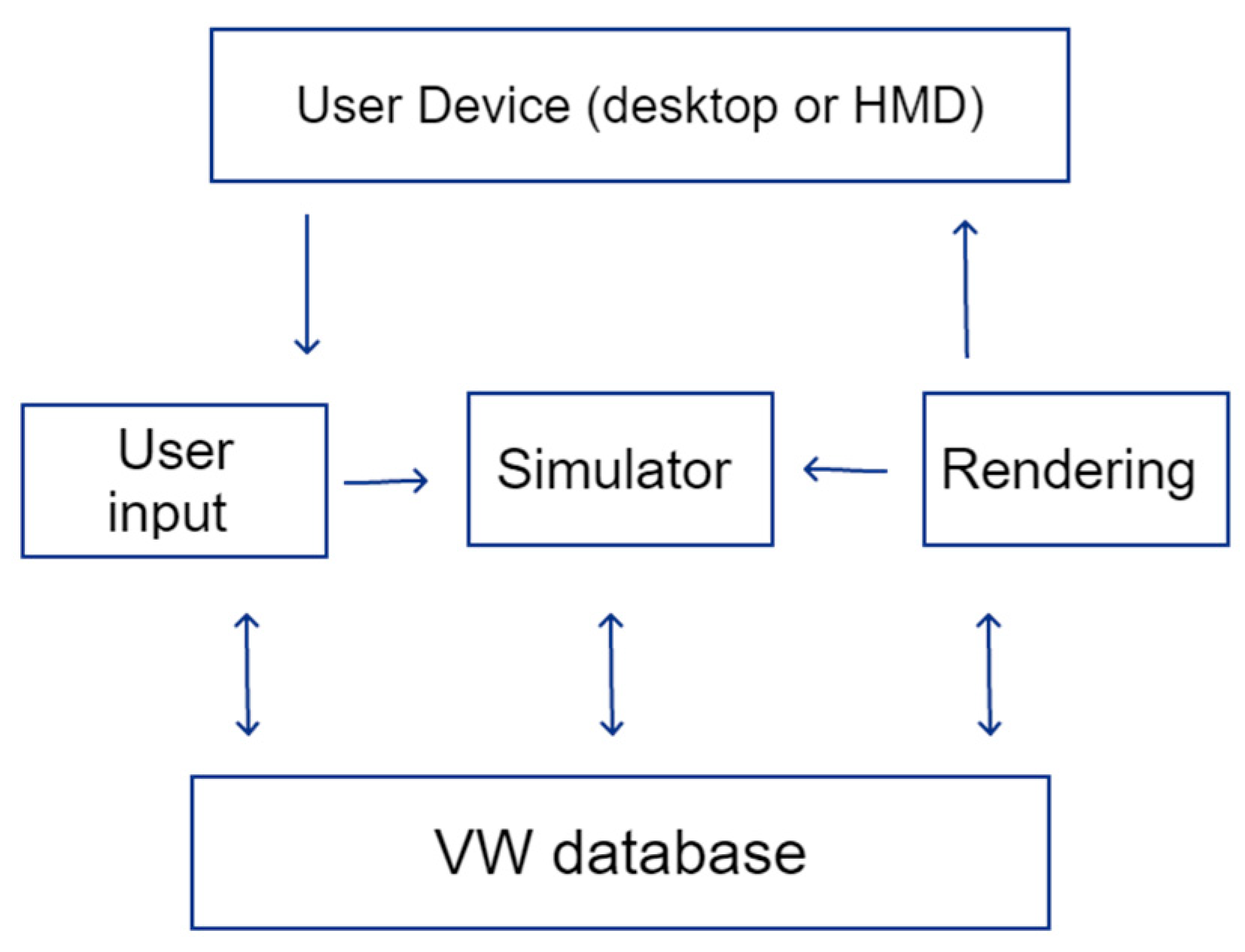
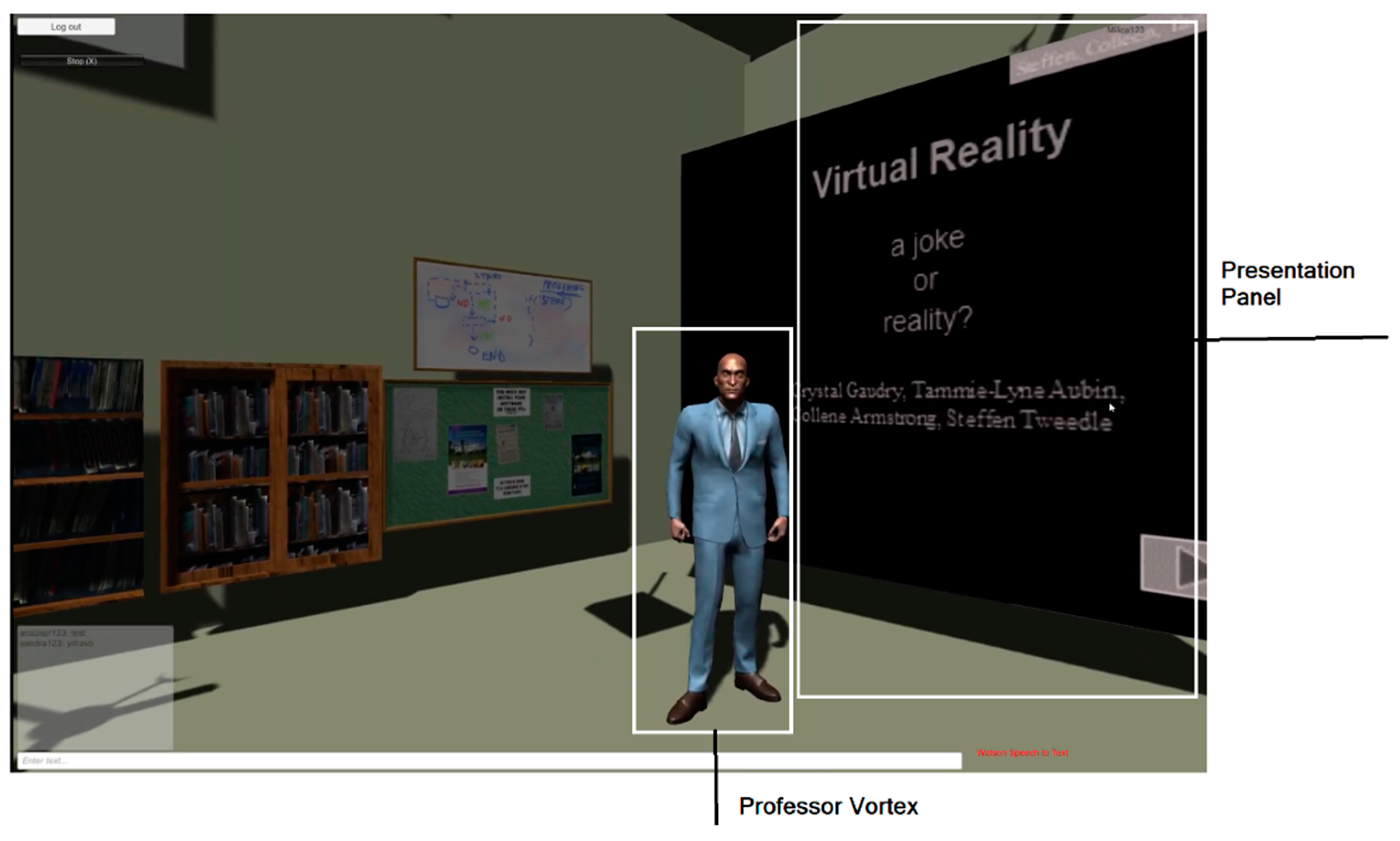
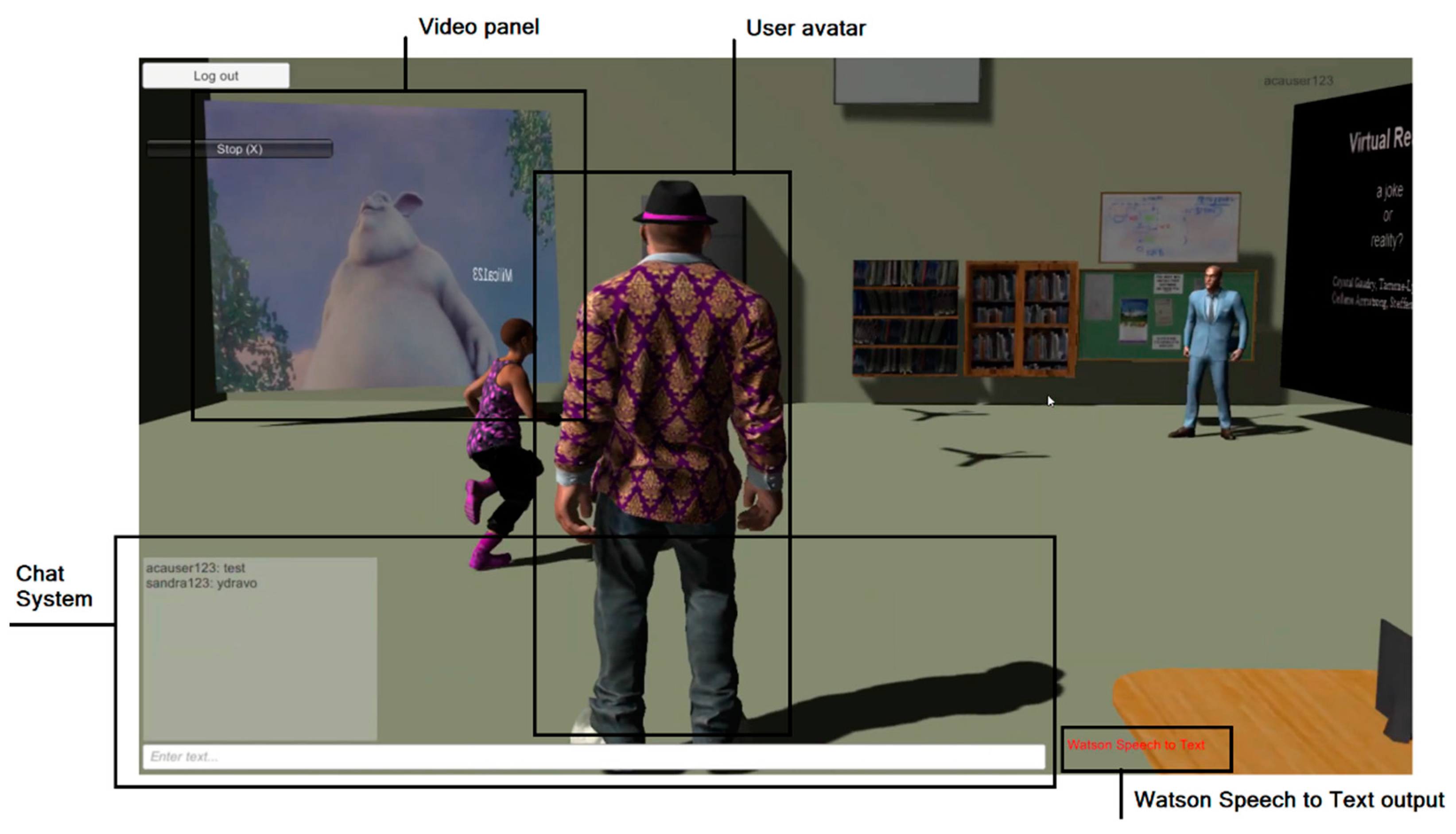
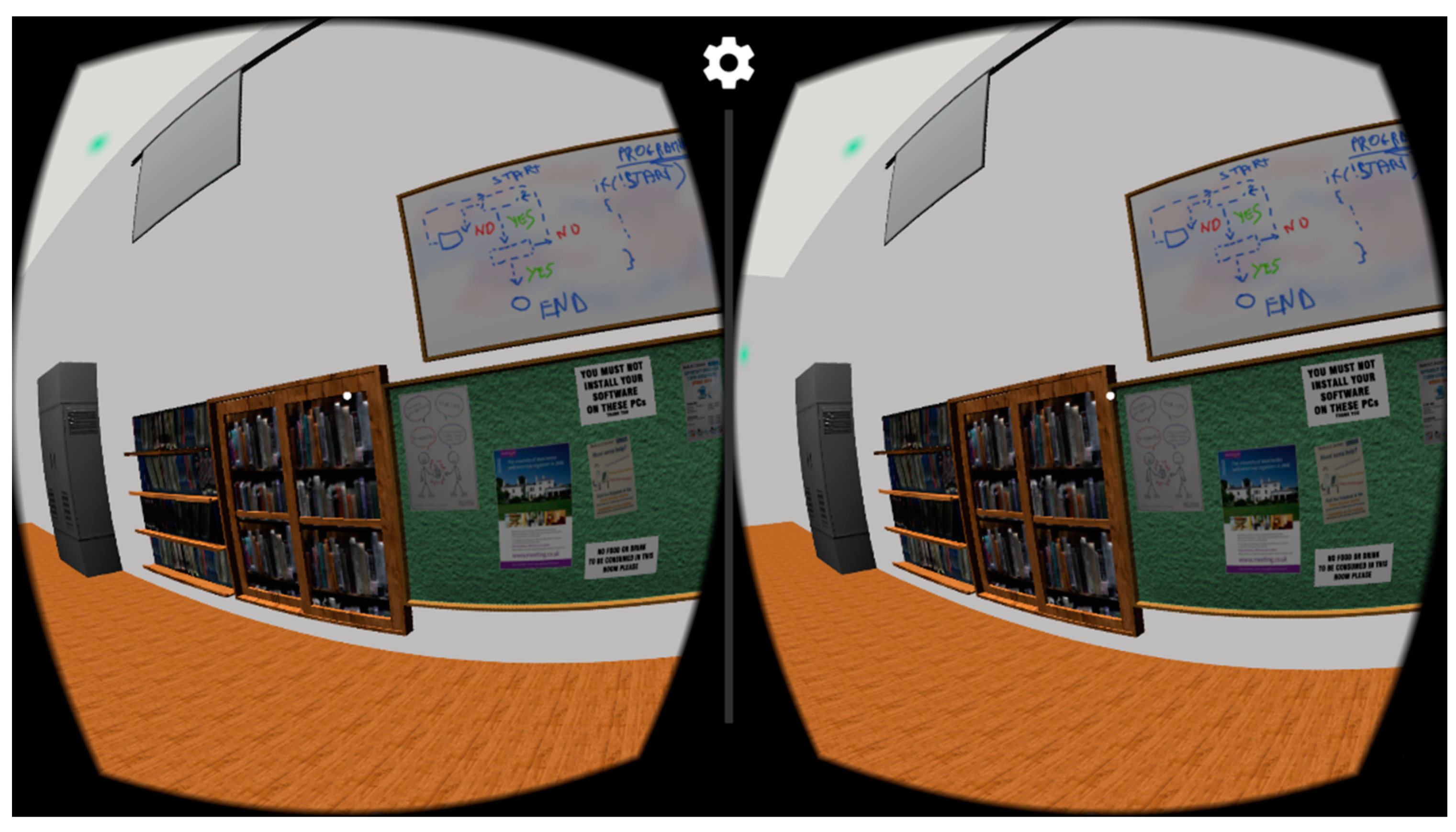
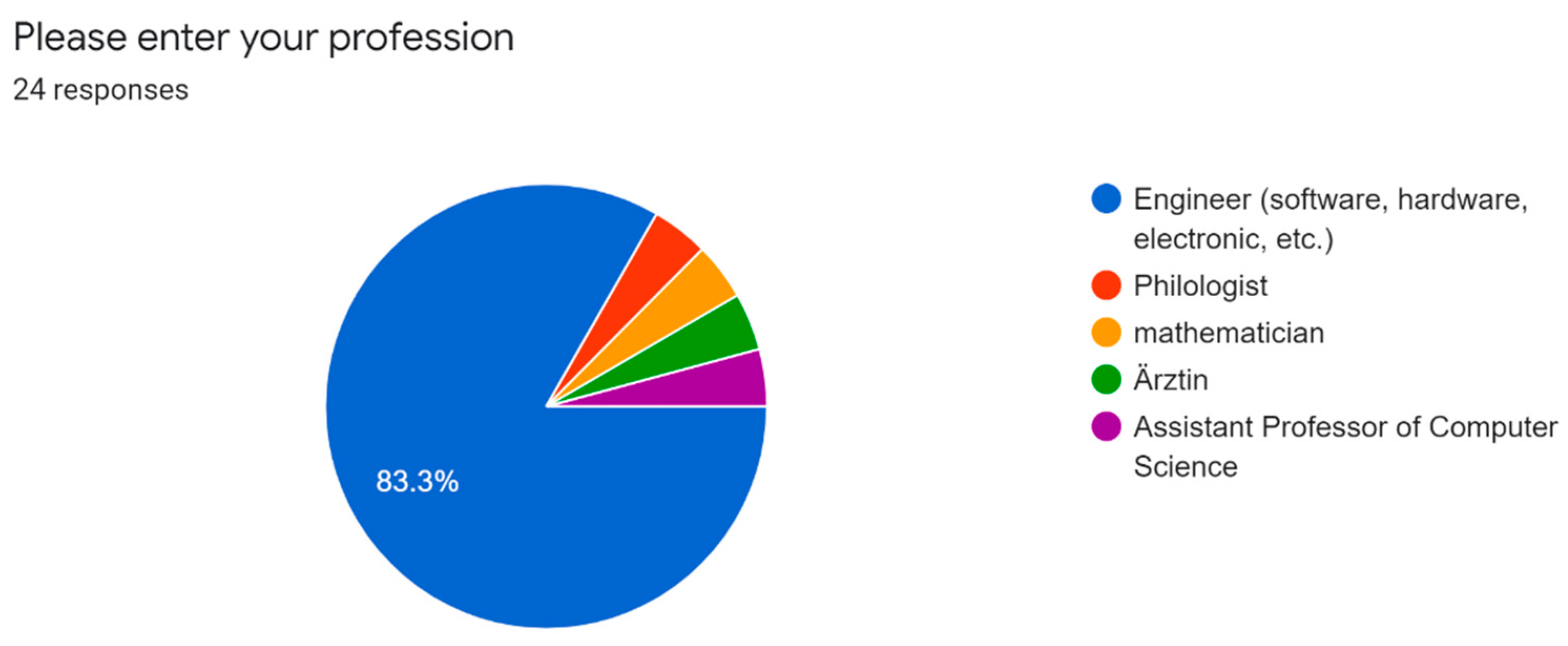
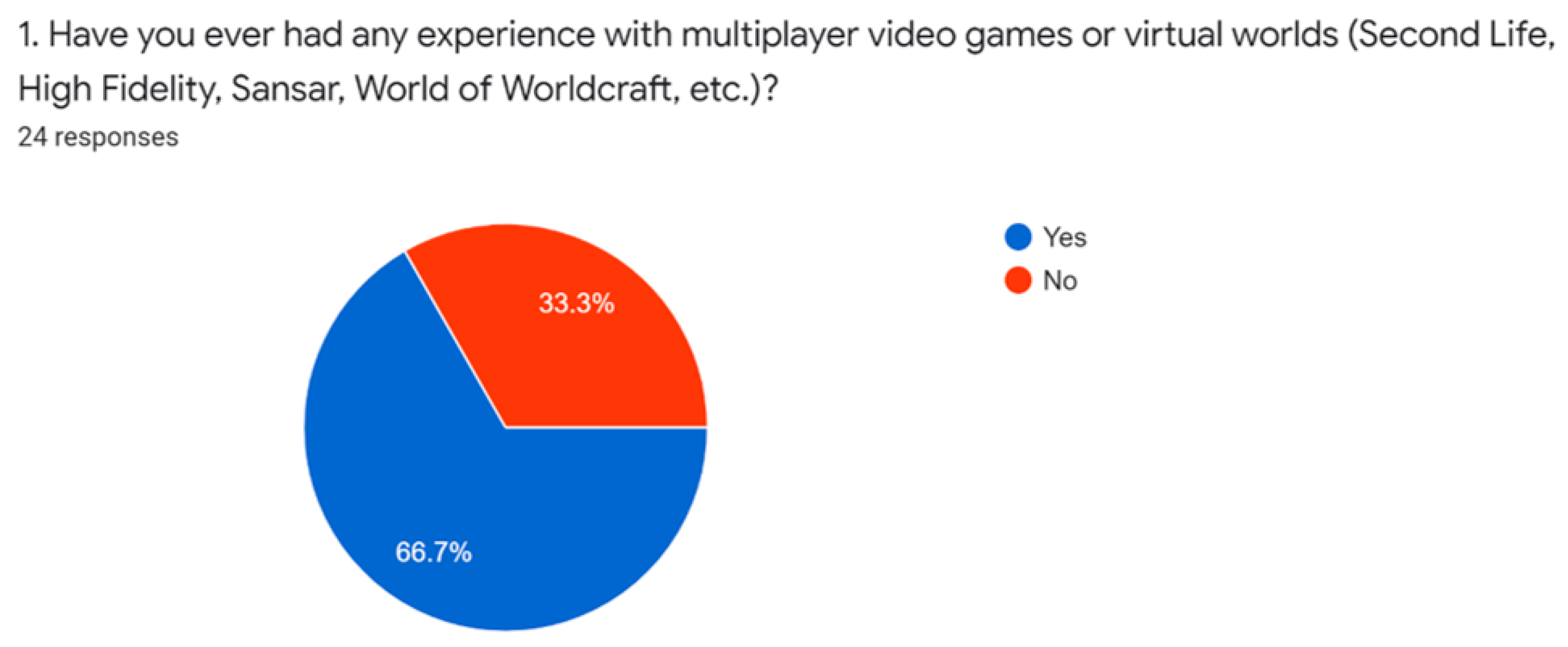
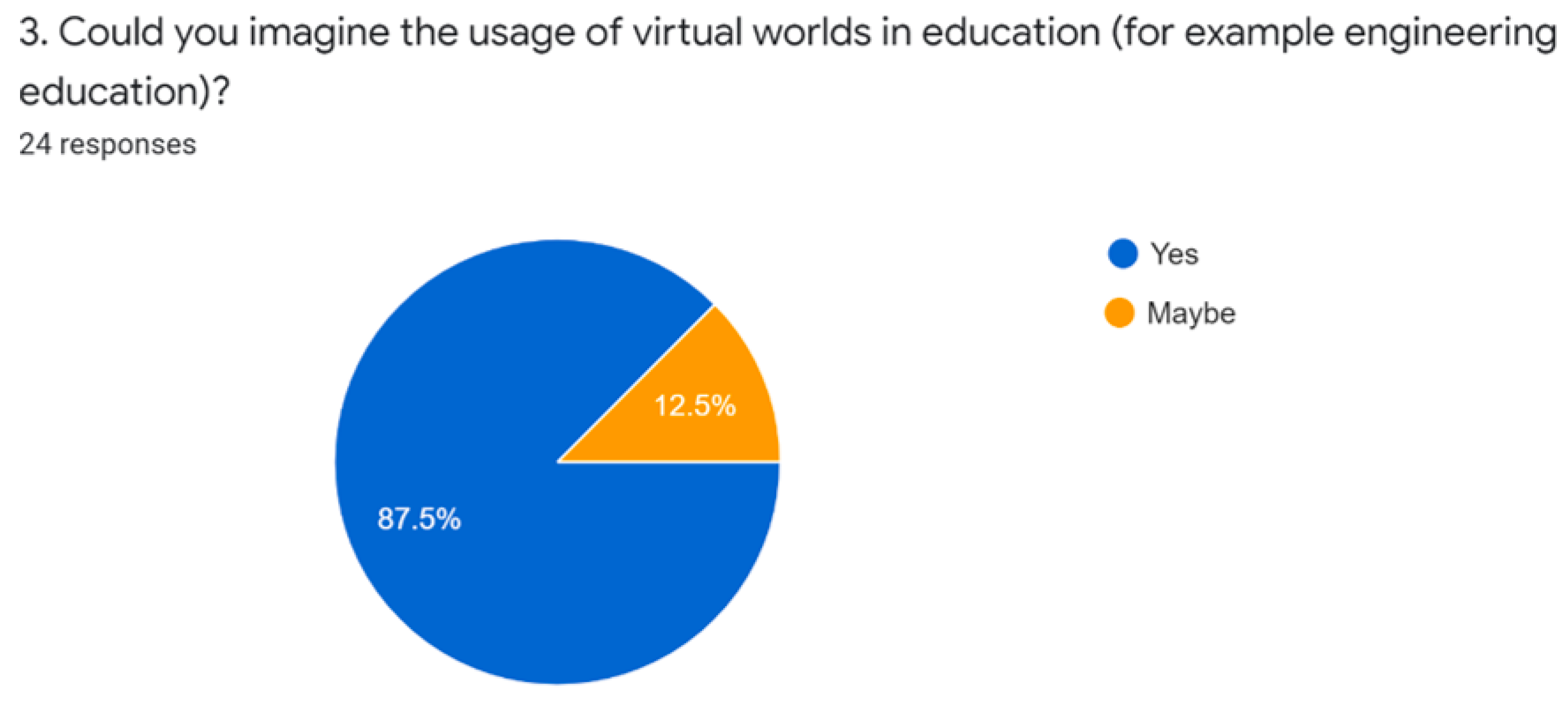
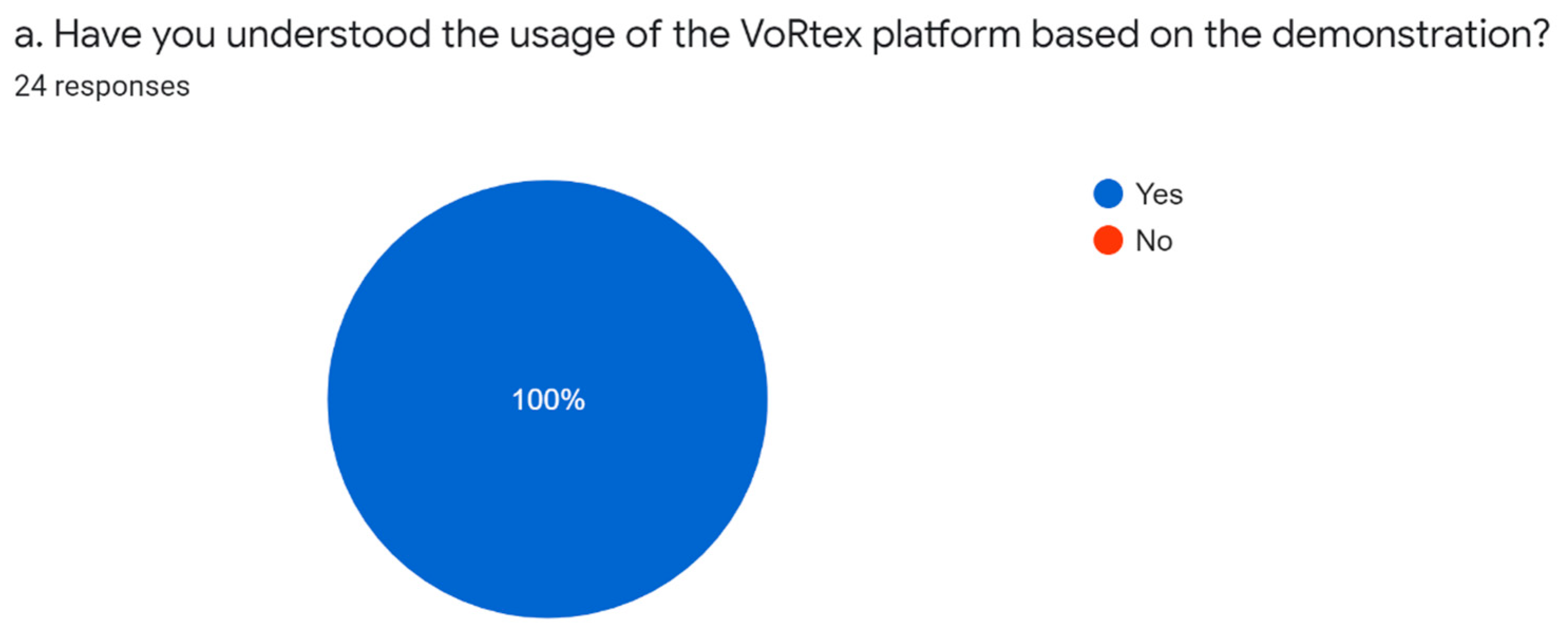
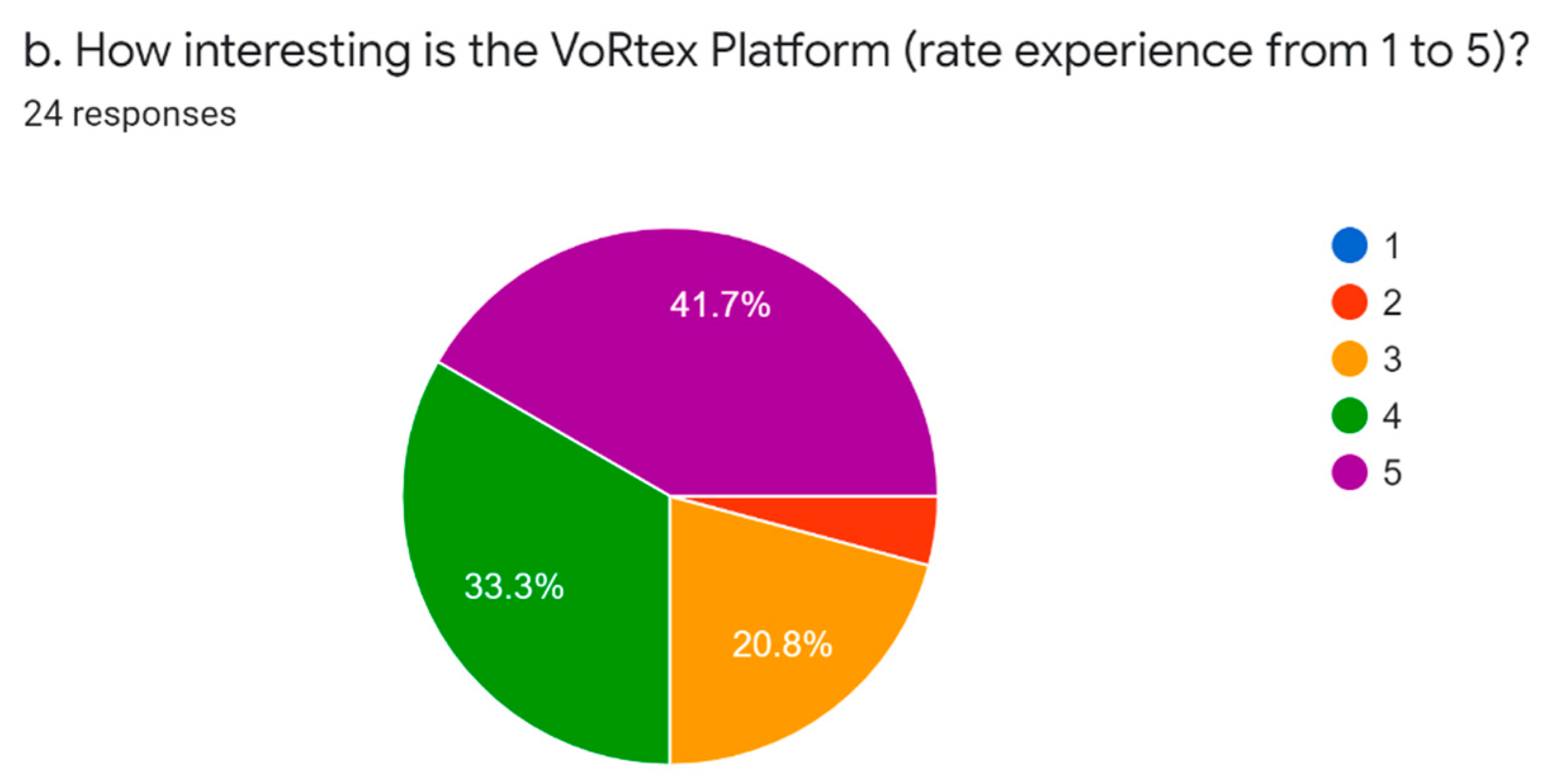
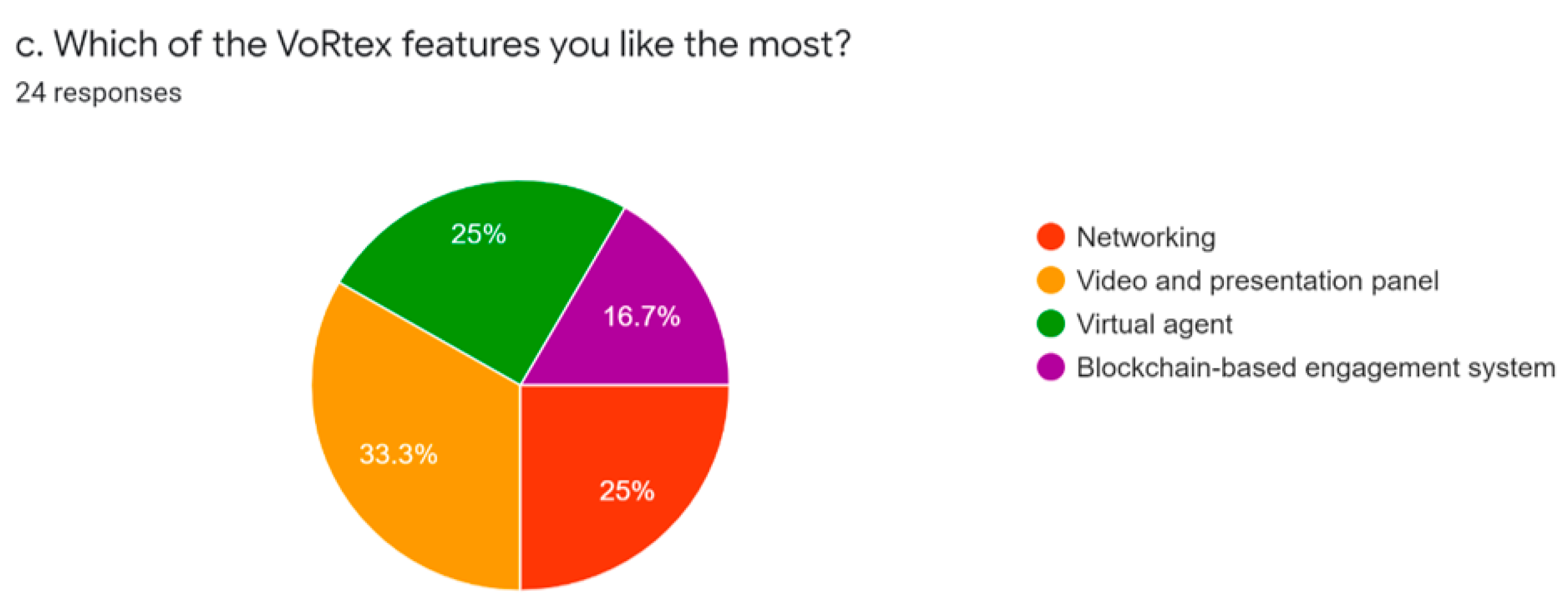
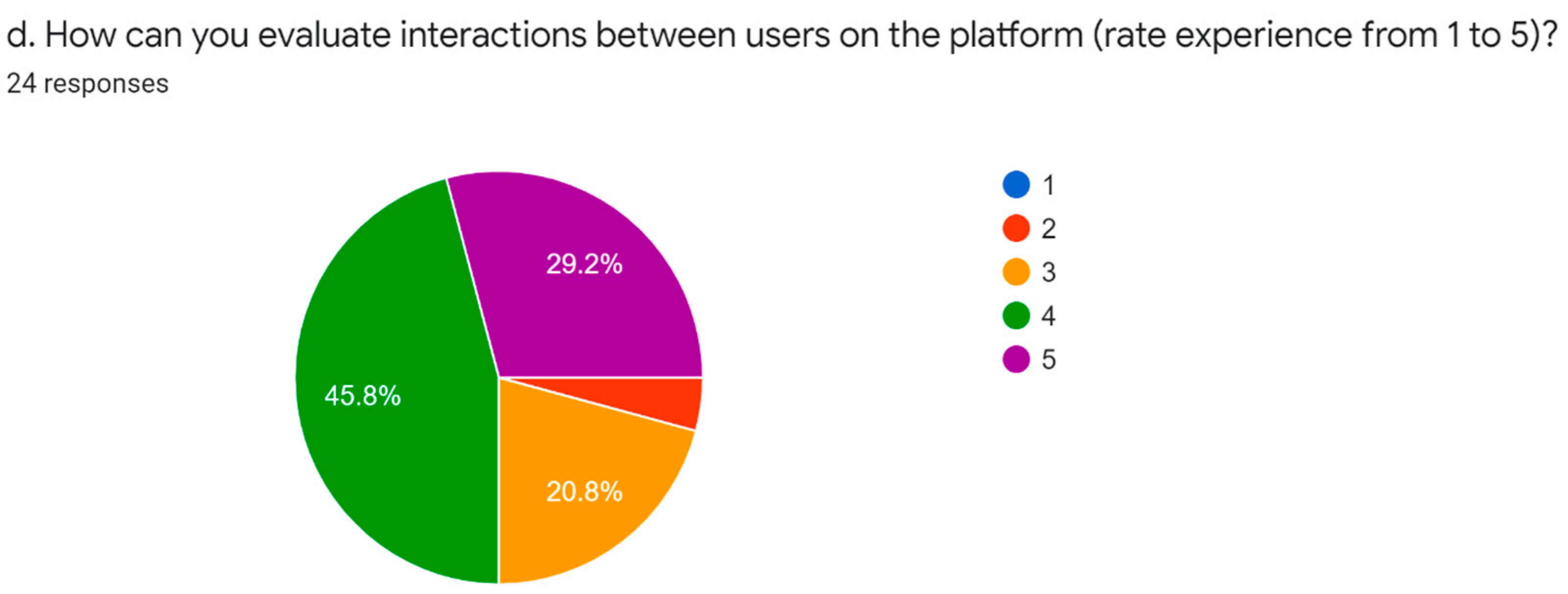
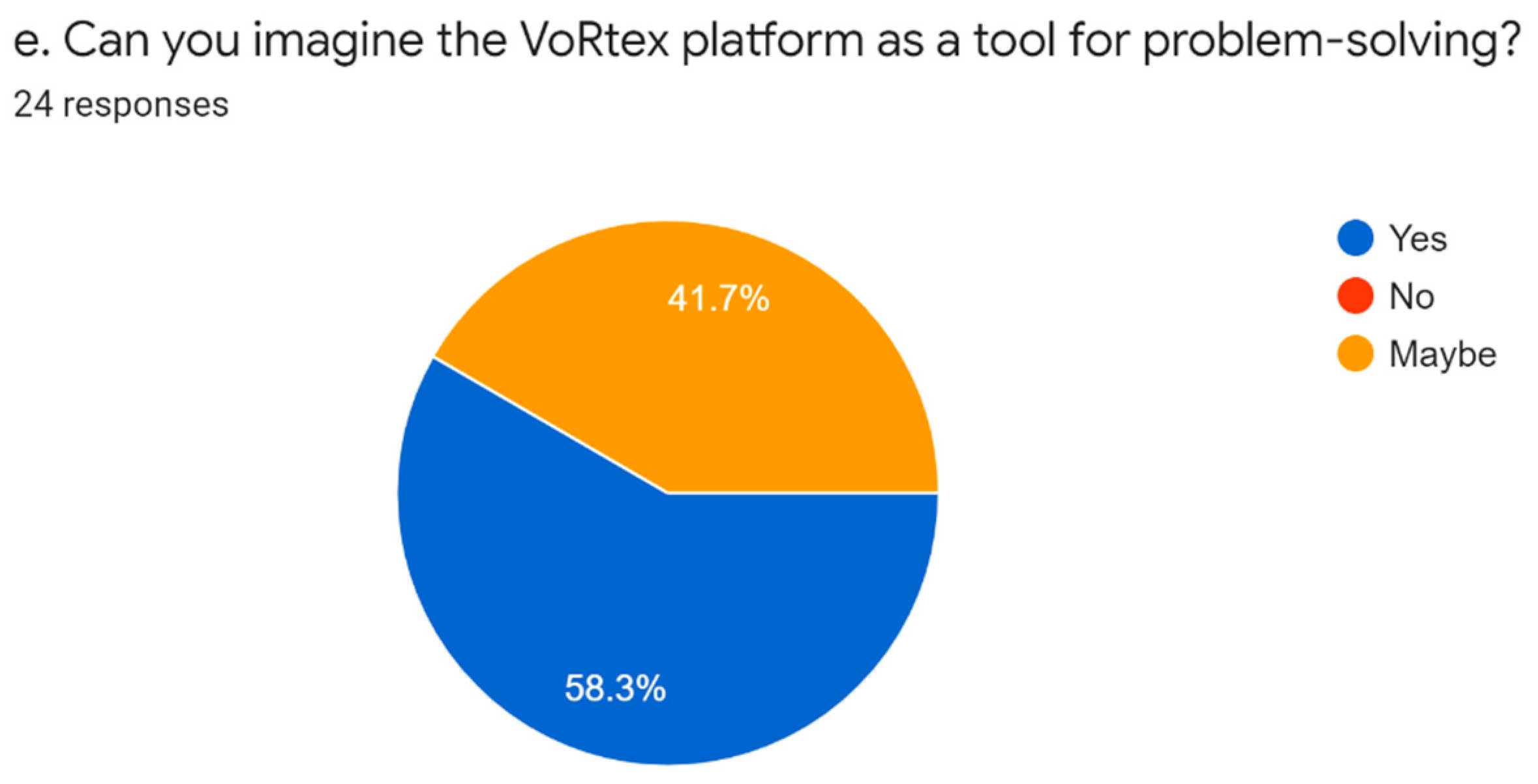
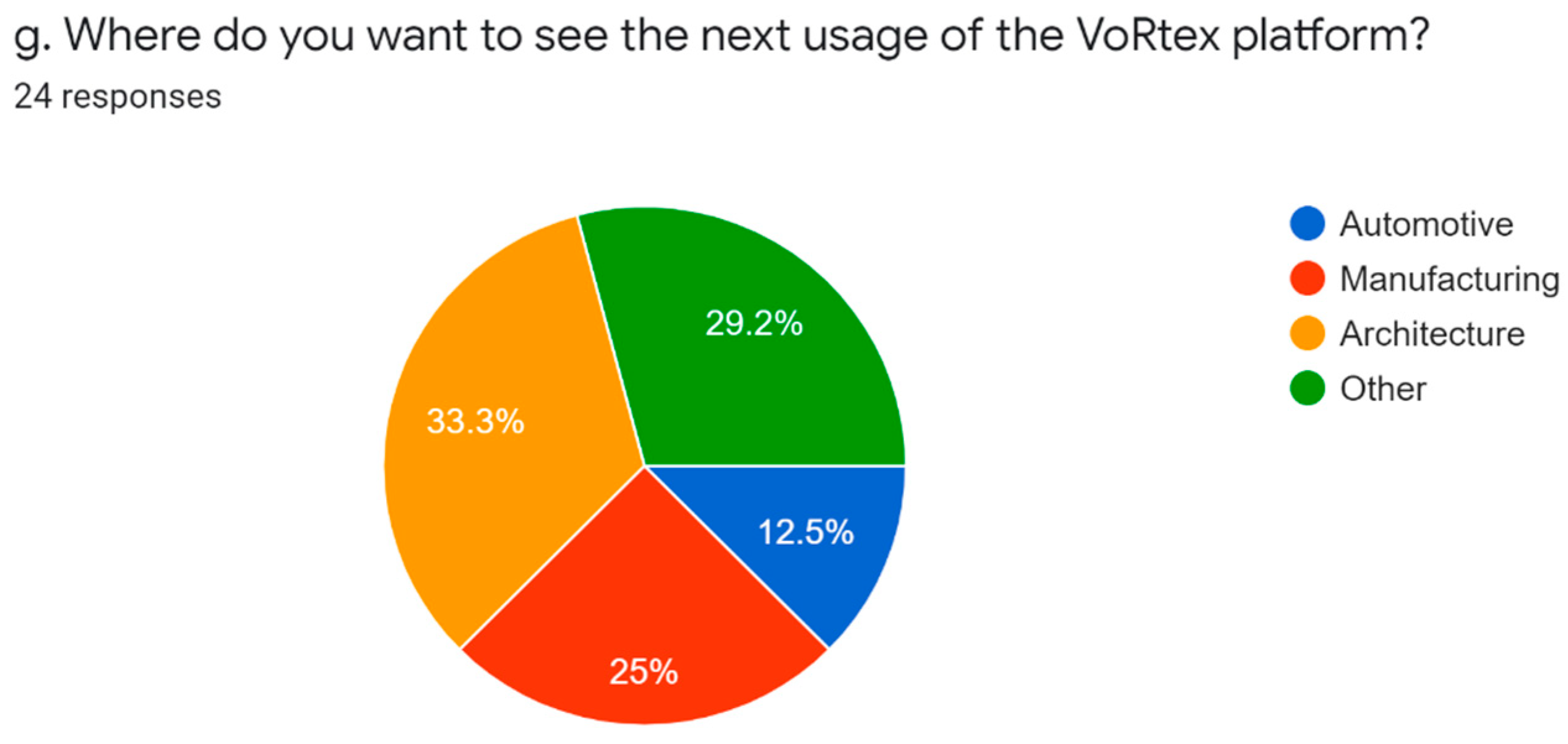
| Criteria | Vircadia (High Fidelity) | Sansar | VoRtex | |
|---|---|---|---|---|
| Virtual world design | Online interaction | 70 | 90 | 75 |
| AI in the world (chatbots or NPC) | 50 | 50 | 80 | |
| The existence of interactive objects | 85 | 85 | 80 | |
| 3D models and environments | 50 | 95 | 80 | |
| Communication | Audio | 80 | 40 | 75 |
| Nonverbal | 70 | 70 | 60 | |
| Text | 10 | 80 | 70 | |
| Avatar control | Move | 90 | 90 | 90 |
| Sit | 90 | 50 | 80 | |
| Fly | 90 | 0 | 50 | |
| Avatar design | Complex | 60 | 90 | 80 |
| Configurable | 30 | 80 | 70 | |
| Upload custom model | 90 | 60 | 80 | |
| Scalability | Multiple servers | 90 | 75 | 80 |
| Limit of the world space | 70 | 80 | 70 | |
| Security | Right on digital creations (DRM) | 65 | 50 | 70 |
| Data transaction | 80 | 70 | 50 | |
| Identity management | 50 | 50 | 90 | |
| Content generation | External tools | 90 | 65 | 60 |
| Inside the world tools | 90 | 65 | 60 | |
| Development support | Scripts (.NET or Python scripts) | 90 | 70 | 10 |
| Open source projects | 90 | 0 | 90 |
| Factors (%) | Vircadia (High Fidelity) | Sansar | VoRtex |
|---|---|---|---|
| Virtual world design | 63.75 | 80 | 78.75 |
| Communication | 53.3 | 63.3 | 68.33 |
| Avatar control | 90 | 47 | 73.3 |
| Avatar design | 60 | 77 | 76.6 |
| Scalability | 80 | 77.5 | 75 |
| Security | 65 | 56.6 | 70 |
| Content generation | 90 | 65 | 60 |
| Development support | 90 | 35 | 50 |
| Total | 74 | 62.67 | 69 |
Publisher’s Note: MDPI stays neutral with regard to jurisdictional claims in published maps and institutional affiliations. |
© 2022 by the authors. Licensee MDPI, Basel, Switzerland. This article is an open access article distributed under the terms and conditions of the Creative Commons Attribution (CC BY) license (https://creativecommons.org/licenses/by/4.0/).
Share and Cite
Jovanović, A.; Milosavljević, A. VoRtex Metaverse Platform for Gamified Collaborative Learning. Electronics 2022, 11, 317. https://doi.org/10.3390/electronics11030317
Jovanović A, Milosavljević A. VoRtex Metaverse Platform for Gamified Collaborative Learning. Electronics. 2022; 11(3):317. https://doi.org/10.3390/electronics11030317
Chicago/Turabian StyleJovanović, Aleksandar, and Aleksandar Milosavljević. 2022. "VoRtex Metaverse Platform for Gamified Collaborative Learning" Electronics 11, no. 3: 317. https://doi.org/10.3390/electronics11030317
APA StyleJovanović, A., & Milosavljević, A. (2022). VoRtex Metaverse Platform for Gamified Collaborative Learning. Electronics, 11(3), 317. https://doi.org/10.3390/electronics11030317







